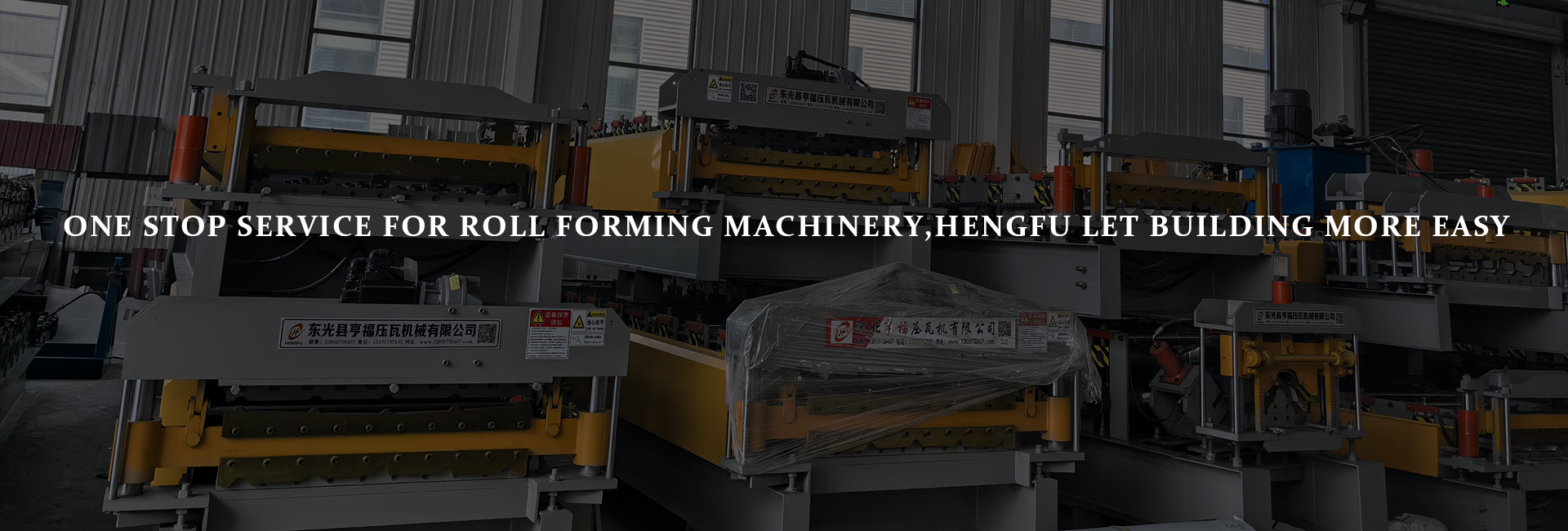Under the guidance of the "dual carbon" goals (peaking carbon dioxide emissions before 2030 and achieving carbon neutrality before 2060), the construction industry is accelerating its transition towards green and low-carbon development. As the core equipment for producing metal roofing panels, the energy consumption and environmental performance of roof panel forming machines have become focal points within the industry. The newly launched energy-saving roof panel forming machines, equipped with innovative technologies and energy-efficient designs, provide new impetus for the green transformation of the construction industry. This article will delve into the characteristics, advantages, and far-reaching impacts of these machines on the industry.
1. Introduction: The Industry Value of Energy-Saving Roof Panel Forming Machines
1.1 Green Transformation and Energy-Saving Needs in the Construction Industry
With increasingly stringent environmental protection policies, the construction industry's requirements for energy conservation and emission reduction are continually rising. The high energy consumption and low resource utilization efficiency of traditional roof panel forming machines contradict the trend of green transformation. The emergence of energy-saving equipment aligns with the industry's urgent need to reduce energy consumption and carbon emissions.
1.2 Pain Points of Traditional Equipment and Advantages of Energy-Saving Equipment
Traditional roof panel forming machines suffer from issues such as severe energy waste and low operational efficiency, which not only increase production costs for enterprises but also burden the environment. Energy-saving roof panel forming machines, through technological innovation, reduce energy consumption while enhancing production efficiency, achieving a win-win situation for both economic and environmental benefits.
1.3 Core Focus of This Article: Equipment Analysis and Green Transformation Paths
This article focuses on the technological characteristics and efficiency enhancement mechanisms of energy-saving roof panel forming machines, exploring specific paths for them to facilitate the green transformation of the construction industry and providing references for industry development.
2. Basic Understanding of Energy-Saving Metal Roof Forming Machines
2.1 Equipment Definition and Functional Overview
Energy-saving roof panel forming machines are specialized equipment that integrate energy-saving technologies with advanced processes to process metal sheets into roof panels of specific shapes. While ensuring efficient production, they minimize energy consumption and reduce environmental impact.
2.2 Core Components and Energy-Saving Designs
Energy-Saving Rolling System: Adopts optimized roller designs and transmission structures to reduce operational resistance and power loss while ensuring forming precision.
Intelligent Transmission Device: Equipped with high-efficiency, energy-saving motors and intelligent speed control systems, it automatically adjusts rotational speeds according to production needs to avoid energy waste.
Energy-Saving Control System: Integrates energy management modules to monitor equipment energy consumption in real-time, optimize operational parameters, and achieve precise energy savings.
2.3 Classification of Mainstream Models and Their Energy-Saving Characteristics
Single-Layer/Double-Layer Energy-Saving Models: Meet different production needs while reducing energy consumption per unit product through structural optimization and the application of energy-saving technologies.
Automated Energy-Saving Models: Their fully automatic operation modes reduce manual intervention, and, combined with intelligent control systems, further enhance energy utilization efficiency.
2.4 Key Technical Parameters and Energy-Saving Indicators
Energy Consumption Parameters: Compared to traditional equipment, energy-saving roof panel forming machines significantly reduce electricity consumption per unit of output, demonstrating their energy-saving advantages.
Efficiency Parameters: Maintain high forming speeds and production precision while achieving energy savings, ensuring that production efficiency is not compromised.
3. Core Mechanisms for Efficiency Enhancement and Green Transformation of Energy-Saving Equipment
3.1 Automated Production and Energy Consumption Optimization
The automated production processes of energy-saving roof panel forming machines reduce the number of equipment startups and shutdowns as well as idle times. When combined with intelligent control systems, they automatically adjust operational parameters based on sheet specifications and production tasks, achieving precise control of energy consumption, effectively shortening project timelines, and reducing energy use.
3.2 High-Precision Forming and Material Savings
High-precision rolling and cutting systems reduce errors and waste during sheet processing, improving material utilization rates. This not only lowers production costs but also reduces resource waste and waste emissions, aiding the green development of the construction industry.
3.3 Compatibility with Multiple Sheet Specifications and Energy-Saving Production
These machines are capable of processing sheets of various specifications. With simple parameter adjustments and mold changes, they can produce roof panels of different profiles and sizes. This avoids energy consumption caused by frequent equipment or mold replacements, reducing overall production costs.
3.4 Energy-Saving Advantages of Intelligent Control Systems
Intelligent control systems monitor equipment operational status and energy consumption data in real-time, optimizing operational strategies through data analysis. For example, they automatically adjust motor speeds and optimize rolling pressures to ensure that equipment operates under the most energy-efficient conditions, significantly reducing operational complexity and energy consumption levels.
4. Recommendations for Selecting and Using Energy-Saving Roof Panel Forming Machines
4.1 Model Selection Based on Project Needs
Small-Scale Projects: For projects with small construction volumes and low energy consumption needs, basic energy-saving single-layer forming machines can be selected to meet production requirements while achieving energy-saving goals.
Large-Scale Projects: For large-scale, high-output construction projects, fully automatic double-layer energy-saving forming machines are recommended. Their high-efficiency and energy-saving characteristics are better suited to intensive production needs.
4.2 Emphasis on Brand and After-Sales Support
Choose brands with good reputations and technological strengths, as their energy-saving equipment offers better guarantees in terms of technological research and development and product quality. A comprehensive after-sales service system can provide energy-saving technical support and equipment maintenance, ensuring the long-term stable operation of the equipment.
4.3 Routine Energy-Saving Maintenance and Fault Prevention
Regularly clean and lubricate the equipment, and inspect the







